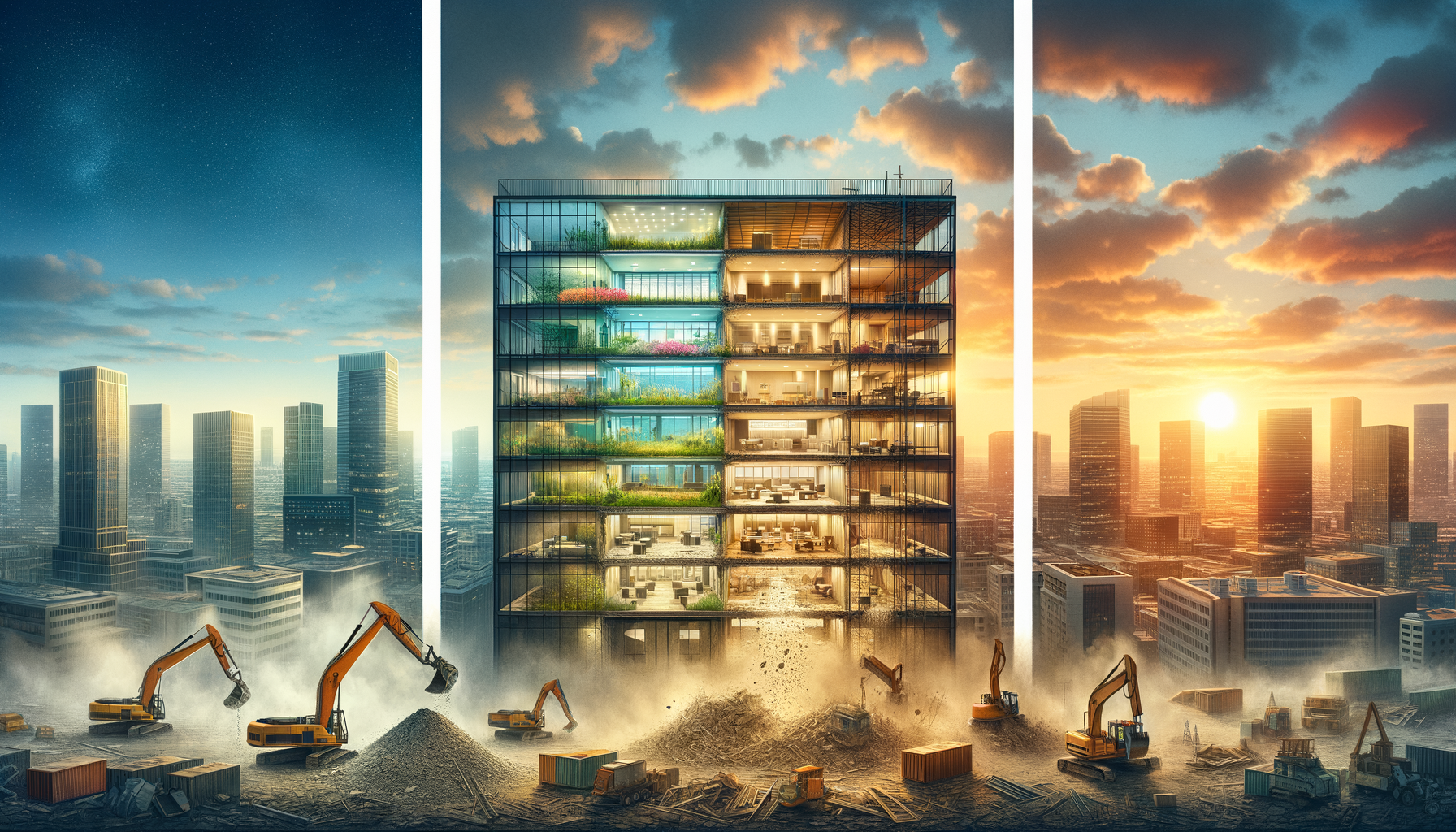“Exploring the Future of Office Buildings: From Corporate Hubs to Residential Spaces or Ruin – Insights from JLL’s Bob Knakal”
“Towards A Residential Future: The Metamorphosis of Office Spaces.”
The future of workspaces has been a topic of keen speculation and intense debate, particularly in the wake of the global pandemic. A rising trend, as experts predict, is the repurposing of office buildings into residential units or, in some cases, their absolute demolition.
An increasing number of commercial real estate owners are leaning towards the residential conversion of their office properties. The reasons underpinning this shift are numerous and varied, with the significant impact of the COVID-19 pandemic being a precipitous factor.
The pandemic forced businesses across the globe to rethink their operational dynamics and consider alternatives to traditional office work. Remote work or ‘working from home’ emerged as a robust alternative, offering unique benefits such as flexible work hours, no commute, and a better work-life balance. Consequently, it spurred a decline in the demand for office spaces, leaving lots of commercial buildings vacant.
In the face of this stark reality and responding to the surging demand for residential spaces, more and more property owners are mulling over the restructuring of commercial properties for residential purposes. Moreover, the perks of living right in the heart of the city, amidst everything, are equally appealing to potential residents.
But beyond the COVID-19 pandemic, other contributory factors highlight the broader context of this shift. For instance, the rise in urbanization is driving up the demand for in-city residences. According to predictions by the UN, two-thirds of the world’s population will reside in urban areas by 2050. This fuels the necessity for residential units in urban areas, making the conversion of office spaces into residential buildings a smart move.
Meanwhile, the concept of ‘live, work, play’ is gaining popularity. Millennials and Gen-Z, the primary workforce demographics, prefer mixed-use spaces that blend living, working, and leisure. Commercial spaces converted into residential units, especially in city centers, perfectly suit this preference, further fueling the reshaping trend.
The transition from office to residential spaces, though seemingly straightforward, is not easy. It requires meticulous planning and can be quite challenging – both legally and technically. Every country, state, or city has its unique real estate laws and regulations that determine what changes can be made to a property. Technical difficulties also exist primarily concerning the infrastructure and facilities’ conversion to accommodate residential populations.
Quite interestingly, not every office building that becomes vacant or receives less monetary backing will witness this transformation. Some might be repurposed into other commercial venues like shopping centers or recreational facilities. While other structures might face demolition due to non-viability of transformation.
A striking example of this is the iconic former AT&T headquarters in Basking Ridge, New Jersey, which is being demolished due to retrofitting costs outweighing the benefits. The plan is to replace it with smaller modern amenities, setting a precedent for others to consider similar steps if faced with untenable retrofitting scenarios.
Successful conversions have been noticed, highlighting the plausibility and potential returns of such ventures. Rudin Management’s transformation of two upper floors of its Manhattan office building into apartments and Vornado Realty’s conversion plans for Penn Plaza offices into a huge rental apartment complex are some instances.
However, it’s vital to understand that the nature and pace of this transformation would vary, depending on local housing demand, existing infrastructure, and city-specific regulations. Thus, it’s a journey where each location has to carve its unique path.
Consequently, this trend sets the stage for innovative architecture and design solutions to reimagine commercial spaces to residential havens, meeting people’s evolving needs. These solutions aim to retain the original structure’s attributes while catering to the residentials’ requirements – be it in terms of safety provisions, installing necessary utilities, or creating layouts conducive to dwellers’ lifestyle.
Lastly, the environmental implications of converting office buildings into residences also deserve mention. With the world moving towards sustainable practices in every sector, real estate is no exception. Constructing a new building, be it commercial or residential, entails significant environmental costs. Conversely, repurposing or demolishing lessens these costs considerably. Consequently, these processes are more environmentally friendly, echoing global calls for sustainable practices.
In conclusion, the widening shift of office buildings to residential units or their complete demolition is arguably more than a response to the pandemic-induced predicaments. It’s a ripple effect of several intertwined socio-economic and environmental factors. We can’t tell for sure if office spaces as we know them will cease to exist entirely. However, what we can expect is ‘change’. We are set to witness new norms for residential and commercial spaces alike, echoing shifts in work culture, rising urbanization, and commitment towards more sustainable practices.
Undoubtedly, the subject lends itself to endless debate. Is it a wise transition? Will we see an end to traditional workspaces? Only time will reveal the finish line of this intriguing race between legacy office buildings and the emerging residential havens. Until then, one can only speculate, innovate and adapt to the ebbs and flows of this transformative tide.

